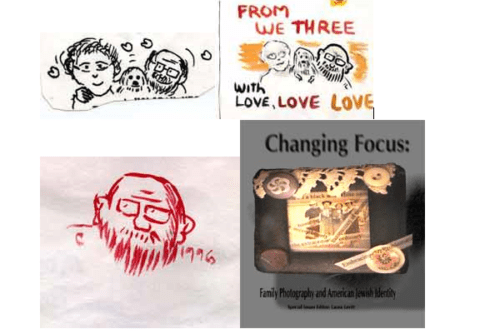All clinical trials involve an implicit social contract whose redistributive politics are rarely questioned. A small population of research subjects (perhaps a few thousand at most) will be subjected to the unknown risks of consuming an investigational new drug so that these risks will become calculable for the population at large. Unknown risks for the few are exchanged for calculable risks for the many. This element of risk exposure is magnified in biomedical prevention trials (that is, studies to test experimental drugs for preventing disease), since these trials not only involve the usual risks of consuming an untested drug but also the risks of infection that extend beyond the trial—risks that are both extraneous to the trial and necessary to its success. 1 Prevention trials rest on the assumption that at least a small proportion of research subjects will become infected during the trial, since it is this very exposure which will retroactively prove the effectiveness of the drug being tested. HIV-prevention trials, for example, are only readable if a certain percentage of trial subjects seroconvert during the trial—an outcome which would otherwise be considered a “serious adverse event.” Because of this requirement, biomedical prevention trials routinely recruit amongst the “at risk”—populations that have been identified as relatively susceptible to infection because of their geographical location or sexual practices, the enduring or recent neglect of public health infrastructures, the absence of universal health insurance, impoverishment, sexual violence, and punitive public health policies. The statistical overexposure experienced by “at risk” populations makes them indispensable to the development of biomedical prevention strategies. However, the connection between the strictly biomedical, punctual risk of the “serious adverse event” and the larger context of exposure which makes certain populations more susceptible to certain kinds of infection is routinely banished from bioethical considerations around the legal obligations of trial sponsors. Institutionalized during the 1930s, the implicit contract between researcher and research subject rests on the tort law doctrine of informed consent or volenti non fit injuria—“to the willing subject no harm can be done”—the libertarian doctrine of individualized risk-exposure that defined the “free labour” contract throughout the nineteenth century. 2
The principle of volenti non fit injuria was forcefully challenged by the trade union movements of the late-nineteenth century, when factory workers refused to accept industrial accidents as an individual responsibility and a routine part of the labor contract. It was this challenge to the fatalism of volenti that would later come to shape the social contractualism of the welfare state, replacing the risk exposure of the individual labor contract with the principle of collectivized risk insurance. Today, as the pharmaceutical R&D process takes on industrial-scale proportions, recruiting experimental subjects en masse into what is often a highly transactional relation, it should not be surprising that the challenge to volenti is again being made, but this time within the context of the expanded clinic rather than the industrial shop-floor. The terms of this critique were posed in the clearest possible way when prospective research subjects challenged a series of planned Gates Foundation trials into a new HIV-prevention method, known as PrEP or preexposure prophylaxis, in 2003. 3 PrEP is an as yet unproven experimental HIV-prevention strategy which involves the use of existing HIV drugs as a form of prevention by the seronegative. 4 In this instance, the drug to be trialed was Tenofovir, patented by the NASDAQ-listed biopharmaceutical company Gilead Sciences (better known for holding the Tamiflu patent). The trial was to take place in Cambodia, Cameroon, Thailand, Nigeria, and Ghana, amongst a diverse group of “at risk” research subjects—sex workers in Cambodia and Cameroon, “high-risk” women in Nigeria and Ghana, men-who-have-sex-with-men in Malawi, and injecting drug users in Thailand. But despite extensive pretrial consultations, almost all of the trials had run into some kind of opposition from their prospective research subjects by 2004, and all but two (the Thai and Ghana trials) had been discontinued by early 2005.
Many of the prospective research subjects addressed similar questions to the trial sponsors, raising concerns about access to prevention methods during the trial and medical treatment before and after the trial. However, by far the most comprehensive and astute of these critiques was formulated by the Cambodian sex workers’ union, Women’s Network for Unity (WNU), which held a consultation on the trial in July of 2003. 5 The WNU expressed concerns about the absence of phase I safety trials for the drug, noting that Tenofovir had been tested for safety in seropositive patients but no data existed on the possible side-effects of long-term consumption of the drug by the seronegative. They called for higher remuneration than the 3 USD proposed in the original trial protocol, since even the minor side effects which were already associated with the drug would reduce their ability to earn a living. Most pertinently, the WNU demanded that the risks borne by clinical trial subjects should be offset by up to 30 years health coverage for those who suffered long-term side-effects from the trial or seronegative participants who acquired HIV during the trial—a demand that radically challenges the principle of volenti non fit injuria since it effectively establishes an ongoing welfare relation between the trial sponsor and research subject. Unexpected as it was from the point of view of the trial sponsors, the demand was not out of keeping with the WNU’s established practices of political intervention, which have included efforts to negotiate hospital access, antiretrovirals (ARVs,) and “welfare cards” for sex workers. 6 Not surprisingly perhaps, the demand was summarily dismissed by the trial’s sponsors, the Gates Foundation and National Institutes of Health, although the trial researchers did investigate the possibility of providing some form of trial compensation through other funding sources. 7
The public consultations held prior to the Tenofovir trials could not have taken place at a less auspicious time. At the very moment the consultations were held, the United States announced its ambitious new humanitarian aid program for HIV/AIDS—the President’s Emergency Plan for AIDS Relief or PEPFAR—which promoted abstinence as the most effective form of HIV prevention and included specific moral prohibitions against funding, supporting, or collaborating with sex-worker organizations. Although it does not in principle exclude sex workers from its prevention programs, the President’s Emergency Plan has had the practical effect of marginalizing sex workers from USAID-funded clinics and health services. As a collective run by sex workers themselves, the WNU, the Cambodian sex workers’ organization that spearheaded the campaign against the Tenofovir trial, was singled out for special attention by USAID. It subsequently lost the support of all but one NGO (the Cambodia-based Womyn’s Agenda for Change, a group that supports both garment workers in the export-oriented industries and sex workers). 8 The US-based Family Health International (now FHI) abandoned its support of the WNU under pressure from USAID, while at the same time undertaking the contract to manage the logistics of the Tenofovir trial. Researchers, then, found themselves in the uncomfortable position of having to persuade sex workers to enroll in biomedical prevention trials involving a calculated risk of infection, even while existing, highly successful programs providing prevention and health services to sex workers were being closed down.
It was perhaps inevitable, given the circumstances, that the Tenofovir trial would fail to happen. But the closure of the trial, ordered in peremptory fashion by the Cambodian Prime Minister while negotiations were still taking place, was far from the resounding political victory it is sometimes made out to be. The closure of the trial foreclosed continuing discussion while the issues raised by the WNU remain live ones, and without resolution today.
Tenofovir was not the first nor the last large-scale prevention trial to target sex workers as experimental subjects. 9 Under the expansive influence of the Gates Foundation and a panoply of new private-public product-development partnerships, the first decade of the twenty-first century has seen an intensification of clinical research ventures focusing on preventative biomedical interventions: experimental malaria or cervical cancer vaccines, interventions for drug-resistant tuberculosis, and experimental HIV drugs such as vaccines, microbicides, and pre-exposure prophylaxis or PrEP. HIV research in general has seen a shift in focus toward developing new (that is, patentable) biomedical strategies of prevention, sometimes at the expense of longstanding practice-based methods and existing off-patent drugs. 10 Clinical trials for preventative HIV interventions require populations who are relatively “at risk” of exposure compared to the general population. 11 The “at risk” may include men who have sex with men, injecting drug users (particularly the case in Thailand and Vietnam), long-haul truck drivers, commercial sex workers, and women who work in bars, nightclubs, and other entertainment industries where they engage in casual transactional sex as part of their everyday intimate relationships. But the “at risk” is a nebulous category and may also extend to monogamous, married women, who in some contexts, report very high rates of infection. In the parts of the world targeted by Gates Foundation trials, commercial sex workers, female, male, and transwomen, continue to have higher rates of HIV infection, despite the relatively successful 100 percent condom campaigns pursued in the 1990s. Even while it proposes to develop biomedical solutions to HIV infection then, the very calculative logic of the biomedical prevention trial depends on the “structural exposure” of certain populations to HIV—a state of exposure that is not simply a singular biomedical fact, but the material symptom of multiple oppressions (gender inequality, sexual violence, inexistent health services, inadequate provision of condoms, police harassment, criminalization, and punitive public health policies). It is one of the sadder ironies of the early-twenty-first century that at the very moment new biomedical HIV-prevention strategies were being tested en masse as a potential new humanitarian market for the pharmaceutical industry, public health programs based on non-punitive harm-reduction strategies were regressing rather than advancing, particularly for those most susceptible to HIV infection. This was not simply a matter of neglect but of deliberate foreign aid policy. Recent public health agendas, particularly those pursued by the United States, have had a deleterious effect on the “at risk,” singling out sex workers, injecting drug users, and men who have sex with men, for particular moral opprobrium while making harm-reduction and practice-based prevention harder and harder to implement. The more punitive elements of Bush-era public health were softened under Obama, but policies excluding sex workers from prevention programs were subsequently relayed by US antitrafficking initiatives. Sex workers, then, find themselves at the confluence of two rationalities of global public health—one that locates innovation-value in their very overexposure to infection, and the other that exacerbates their susceptibility to infection by studiously marginalizing them from prevention programs. Although these two logics of global public health would seem to proceed from very different understandings of the means and ends of prevention, they do, at times, collaborate in practice. 12 I refer to this convergence of global public health strategies as a form of “double exposure.”
- For an extensive and illuminating discussion of this particularity of the biomedical prevention trial, see Marsha Rosengarten and Mike Michael, “Rethinking the Bioethical Enactment of Medically Drugged Bodies: Paradoxes of Using Anti-HIV Drug Therapy as a Technology for Prevention,” Science as Culture 18.2 (2009): 183-99.[↑]
- For an extended discussion of volenti non fit injuria and the history of informed consent, see Melinda Cooper and Catherine Waldby, Clinical Labor: Tissue Donors and Research Subjects in the Global Bioeconomy (Durham: Duke UP, 2014). In press.[↑]
- My account of the Tenofovir controversy is heavily indebted to Morenike Ukpong and Kris Peterson, eds., Oral Tenofovir Controversy II: Voices from the Field, (Lagos: New HIV Vaccines and Microbicides Advocacy Society [NHVMAS], 2009). See also Edward J. Mills, Sonal Singh, Jerome A. Singh, James J. Orbinski, Mitchell Warren, and Ross E. Upshur, “Designing Research in Vulnerable Populations: Lessons from HIV Prevention Trials that Stopped Early,” BMJ 331 (et al., 2005): 1403-06.[↑]
- PrEP was an as yet unproven prevention method at the time of the trial. It was approved for marketing by the US FDA in July 2012.[↑]
- For this and the material that follows, see Anna Forbes and Sanushka Mudaliar, “The Cambodia Story,” Oral Tenofovir Controversy II: Voices from the Field, eds. Morenike Ukpong and Kris Peterson, (Lagos,: New HIV Vaccines and Microbicides Advocacy Society [NHVMAS], 2009): 8-18.[↑]
- Oxfam, “Sex Workers Self-Organizing and Empowerment: The Experience of Women’s Network for Unity (WNU) in Cambodia,” Exchange, (Amsterdam: KIT, 2007): 2, 8-10. The use of multiple antiretrovirals (ARVs) has been the recommended standard treatment for HIV/AIDS since 1996.[↑]
- Kimberly Page-Shafer, Vonthanak Saphonn, Ly Penh Sun, Mean Chhi Vun, David A. Cooper, and John M. Kaldor, “HIV Prevention Research in a Resource-limited Setting: The Experience of Planning a Trial in Cambodia,” The Lancet 366 (2005): 1501. The decision was not surprising because the US itself has no federal requirement for the compensation of clinical trial subjects. See Steinbrook, 2006. However, the question of compensation and insurance for clinical trial subjects has become particularly urgent in countries such as India and Cambodia where few people have private or public health insurance.[↑]
- See Forbes and Mudaliar, 2009; and on the history of the Women’s Network for Unity (WNU) and Womyn’s Agenda for Change (WAC) see Larissa Sandy, “International Agendas and Sex Worker Rights in Cambodia,” Social Activism in South East Asia, ed. Michele Ford, (London: Routledge, 2012): 154-69.[↑]
- Emily Bass, “AIDS Research with Sex Workers: Lessons Learned,” AIDS Vaccine Handbook: Global Perspectives, ed. Patricia Kahn. (New York: AVAC: Global Advocacy for HIV Prevention, 2005) 183-89.[↑]
- Nguyen, Bajos, Dubois-Arber, O’Malley, and Pirkle, 2011.[↑]
- Subsequent PrEP trials have recruited men who have sex with men and transwomen in Ecuador, Peru, Brazil, Thailand, South Asia and the United States (the iPrEX study), women at “high risk of infection” in Kenya, South Africa and Tanzania (the FEM-PrEP study) and men who have sex with men and female sex workers in Kenya. For details on these trials, see Patton and Kim, 2012, and Mutua et al., 2012.[↑]
- The Gates Foundation, for example, frequently partners with PEPFAR and Bill Gates at least is noted for his uncritical stance toward the moral prescriptions embodied in PEPFAR. during the Bush era. See Ida Susser, AIDS, Sex, and Culture: Global Politics and Survival in Southern Africa (Oxford: Wiley-Blackwell, 2011): 170. The NGO Family Health International (FHI) has refashioned itself as a contract research organization in the service of the Gates Foundation’s clinical research program while at the same time receiving funding from USAID and closely abiding by its Bush-era moral restrictions. See Devin Varsalona, “Family Health International,” Center for Public Integrity, 30 Nov. 2006. Available at http://www.publicintegrity.org/2006/11/30/6396/family-health-international. Accessed 1 Nov. 2012.[↑]



